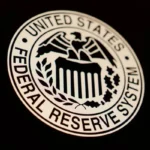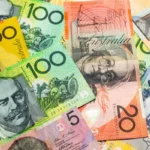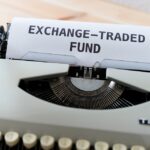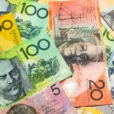

As with many Americans, I am on the road with the family making the traditional holiday rounds. Of course, my family is more “The Griswolds” than “The Waltons”. but even with all of the antics, comedy, and occasional drama, it is always an enjoyable time of the year.
However, I did wake up from my tryptophan-induced coma long enough to pen a few thoughts on the crash in crude oil and the message it is sending.
On Monday, I am publishing an article on the fallacy that “falling energy prices are an economic boost.” It isn’t, and we dig into all the reasons why in that article.
However, the short version is that oil prices are a reflection of supply and demand. Global demand has already been falling for the last several months and oil prices are now waking up that reality. More importantly, falling oil prices are going to put the Fed in a very tough position in the next couple of months as the expected surge in inflationary pressures, in order to justify higher rates, once again fails to appear. The chart below shows breakeven 5-year and 10-year inflation rates versus oil prices.

Oil prices also tend to lead the broad economic cycle as well. The chart below is one of the broadest measures of economic activity and is comprised of leading economic indicators, Fed regional manufacturing surveys, NFIB small business survey, ISM, CFNAI, and Chicago PMI.

Since most of the economic data we look at is trailing, and subject to heavy negative revisions, the collapse in oil prices suggests that coming economic reports will likely be materially weaker than currently expected.
Can I Have A Side Of Debt
But there is another enormous problem currently for the oil and gas sector currently at risk – the debt.
For the last few years, oil companies have been taking of the extraordinarily low interest rate environment to leverage up to chase marginally productive drilling in high-depletion rate shale wells.
Since energy-related bonds make up about 15% of the high-yield index, and with a substantial number of corporate bonds on the verge of falling below BBB ratings in the months ahead, the potential impact of falling energy prices (a reduction in revenue) and higher borrowing costs is a potential double-whammy to an important sector of the economy.

Mark J. Grant recently made some interesting points on this issue:
“Moody’s said the amount of U.S. corporate bonds outstanding, rated at its lowest investment-grade level of Baa, rose to a record $2.83 trillion in the third quarter, topping the $2.62 trillion in single A corporate bonds and the $629 billion in outstanding bonds rated Aa or higher. Within the Baa group, the dollar amount of bonds rated Baa3, Moody’s lowest investment grade rating, ballooned by 140% from the fourth quarter of 2007 to a record $705 billion, in 2018’s third quarter.
Here again, the Fed is not helping, as they are driving up borrowing costs for all of these companies, across the board. There is also a danger here to many insurance companies as their credit rating could be downgraded, if more of the bonds that they own are reclassified as ‘Junk.’ Here is another ‘doom-loop’ scenario that is playing itself out as yields rise and now gap out, in many credits, versus Treasuries.
Baa3 grade corporate debt outstanding has now reached an ‘unprecedented’ 56.8% of speculative-grade, or ‘junk,’ high-yield corporate bonds outstanding. By comparison, the ratio of outstanding Baa3 rated bonds to high-yield bonds was 32.5% before the 2008-2009 financial crisis, 36.9% before the 2001 recession and 22.2% before the 1990-1991 downturn. Startling figures, no doubt.
Moody’s stated:
Thus, from the perspective of dollar amounts outstanding, the U.S. investment-grade corporate-bond market is now riskier than it was before each recession since 1981 and possibly all prior downturns through the late 1940s. Greater uncertainty surrounds the sustainability of corporate earnings growth has adversely affected the performance of medium- and lower-grade bonds. Not since September 2016 has the long-term Baa industrial spread remained above 200 basis points on a recurring basis.”
The collapse in oil prices, which is a direct impact to revenue for oil and gas companies, is going to make already nervous lenders even more adverse to lending to the sector. Secondly, demands to shore up credit-lines, increase loan covenants, provide additional collateral, or simply increase borrowing costs could have a materially negative impact on the sector as a whole.
I Warned You
But none of this should really be a surprise – as I wrote back in August:
“The rise in crude prices from the lows has also been primarily responsible for the uptick in both economic growth and inflationary readings. However, higher oil prices are also a ‘double-edged sword’ which also acts as an additional tax on consumers as well as corporate profit margins. The push above $70/bbl led to a massive surge in crude oil speculators chasing price but also provides the ‘fuel’ for a sharp reversal as well.
For investors, it is also worth noting that crude oil positioning is also highly correlated to overall movements of the S&P 500 index and earnings growth. With crude traders currently extremely ‘long,’ a reversal will likely coincide with both a reversal in the S&P 500 and oil prices being pushed back towards $55/bbl.”














